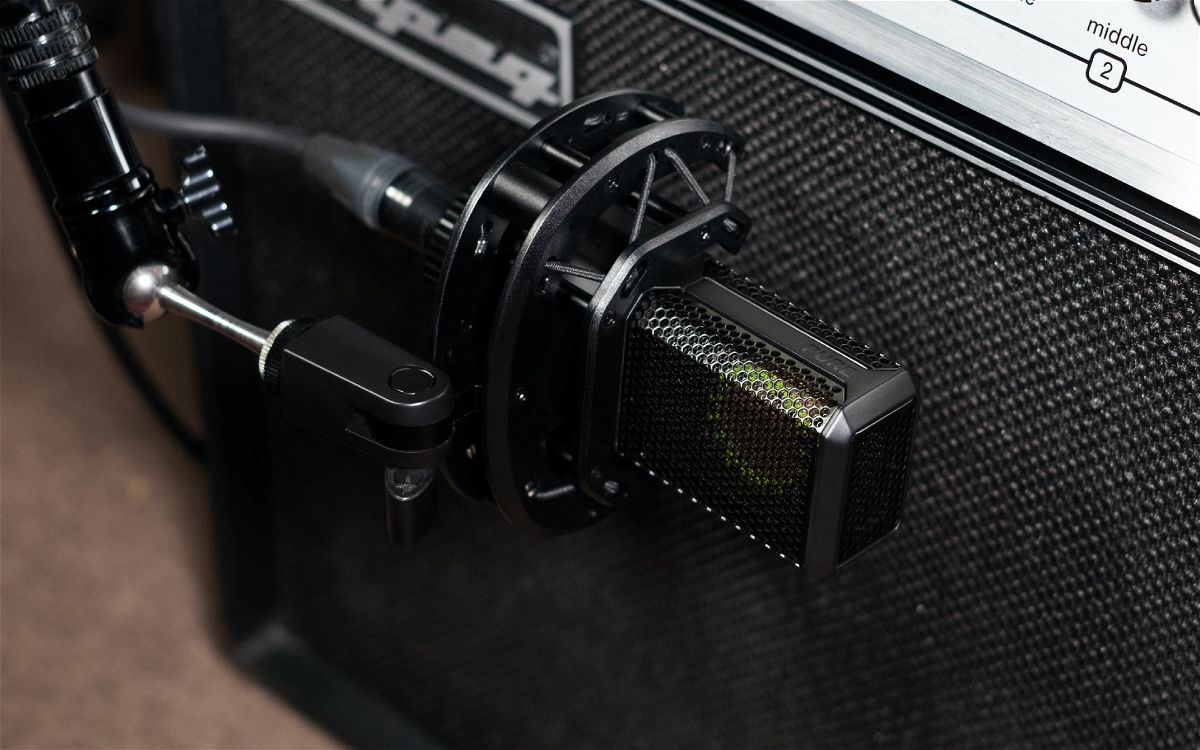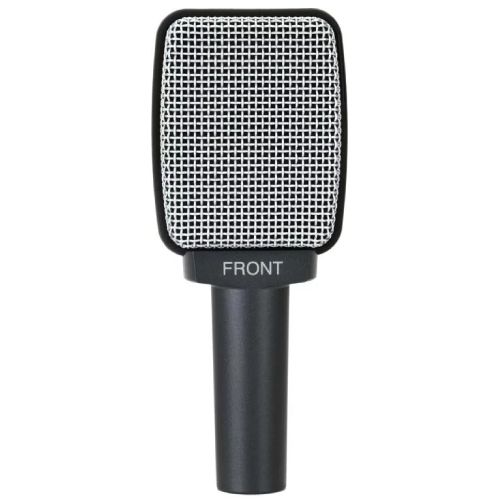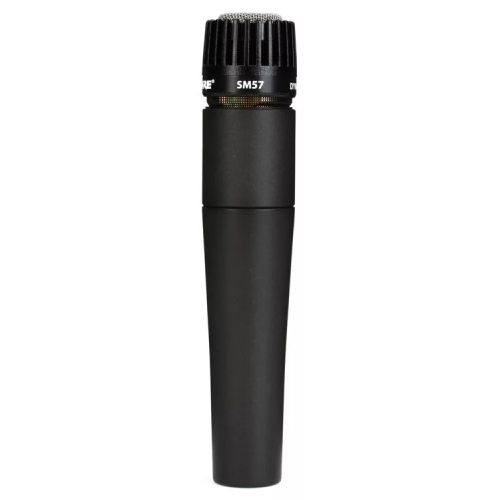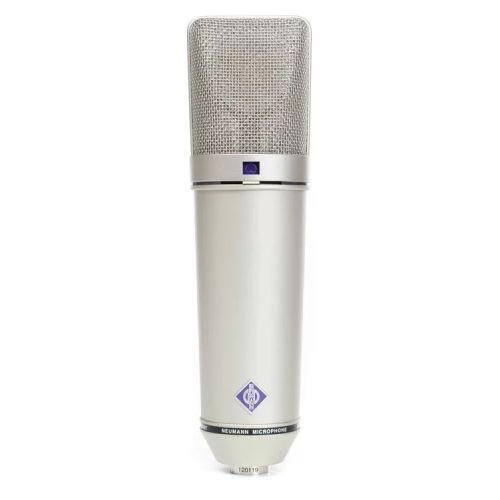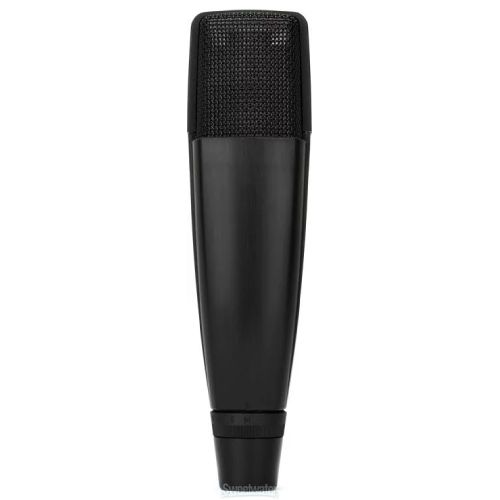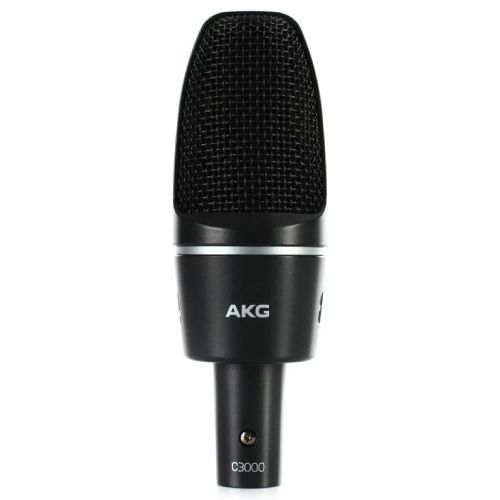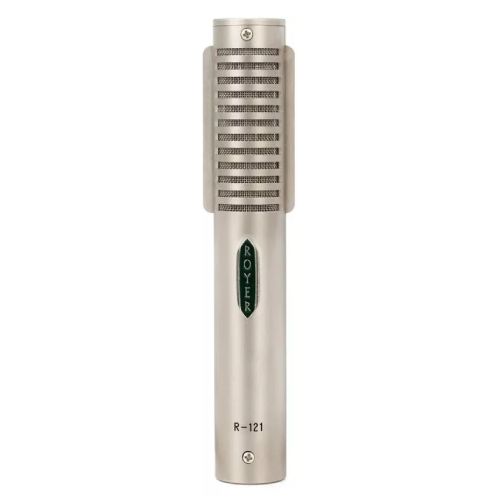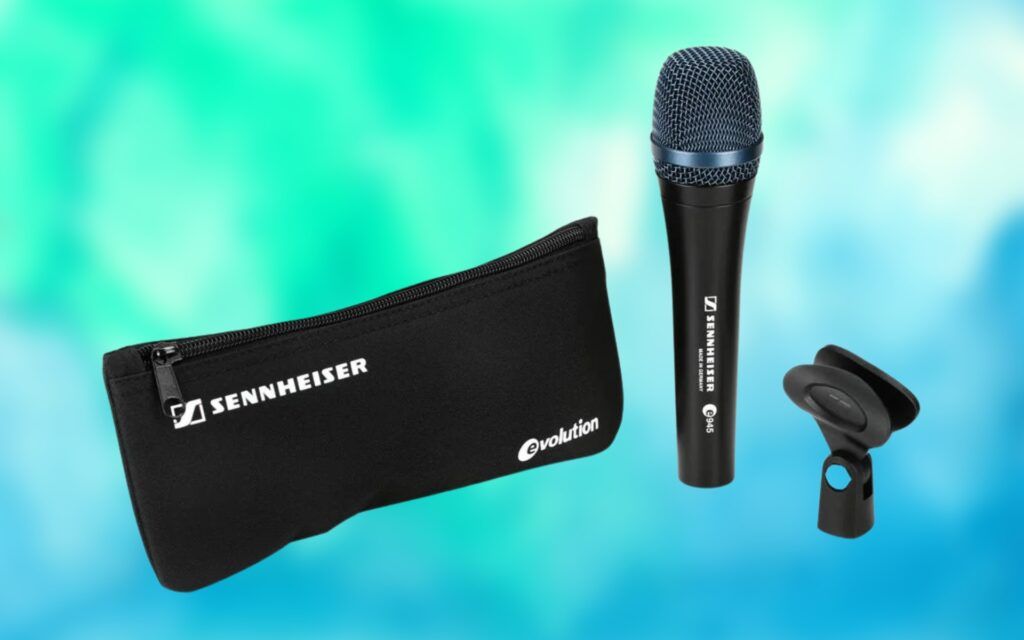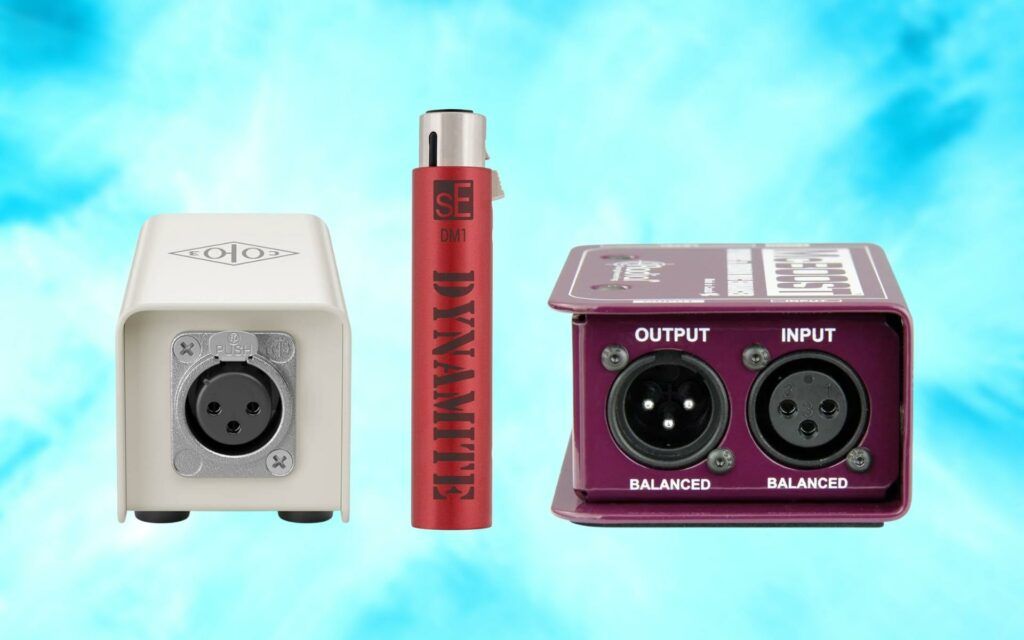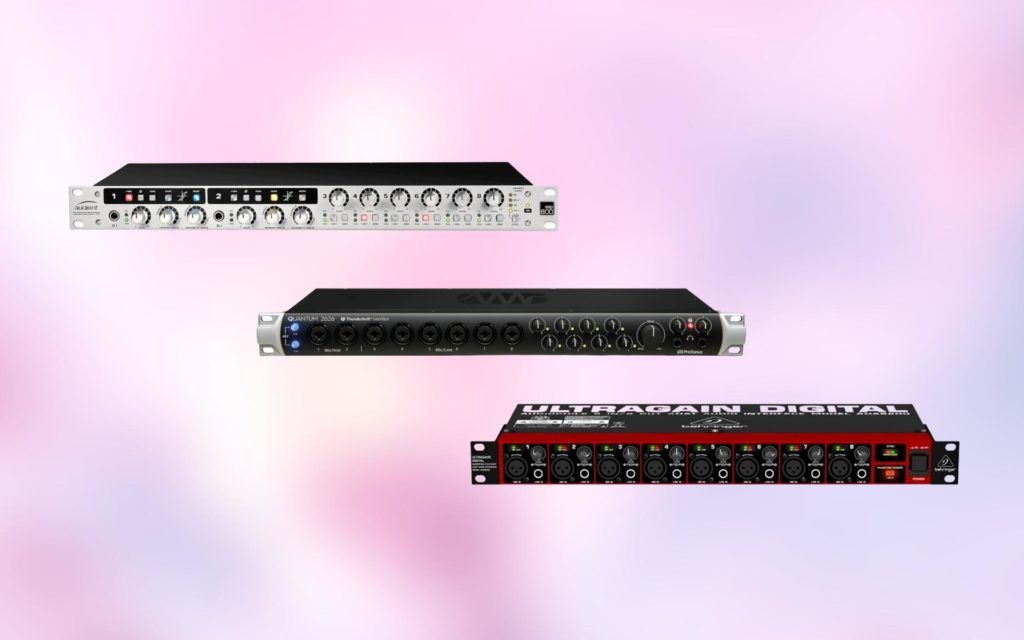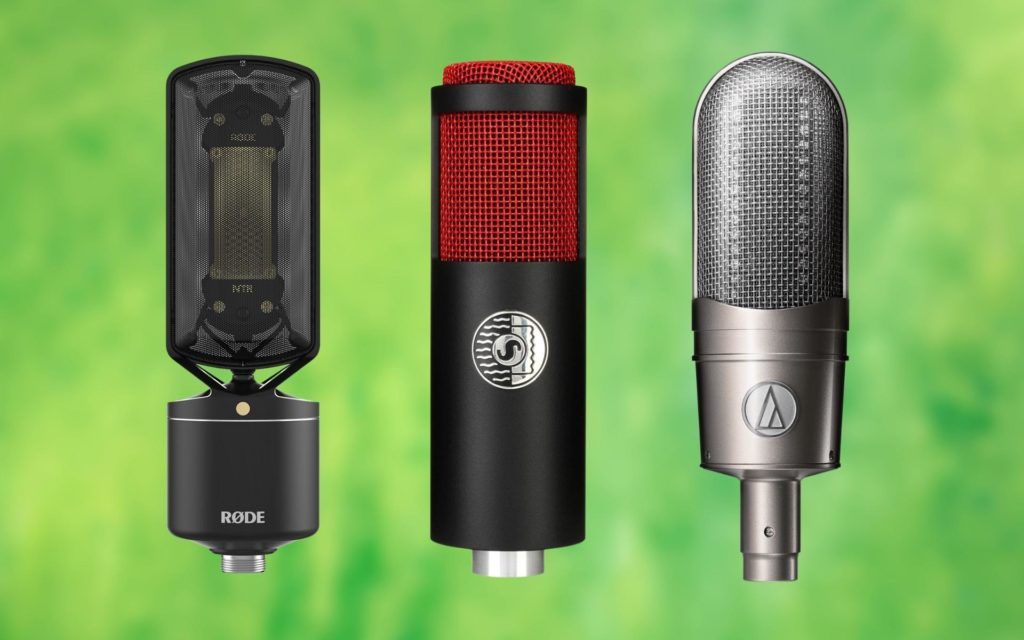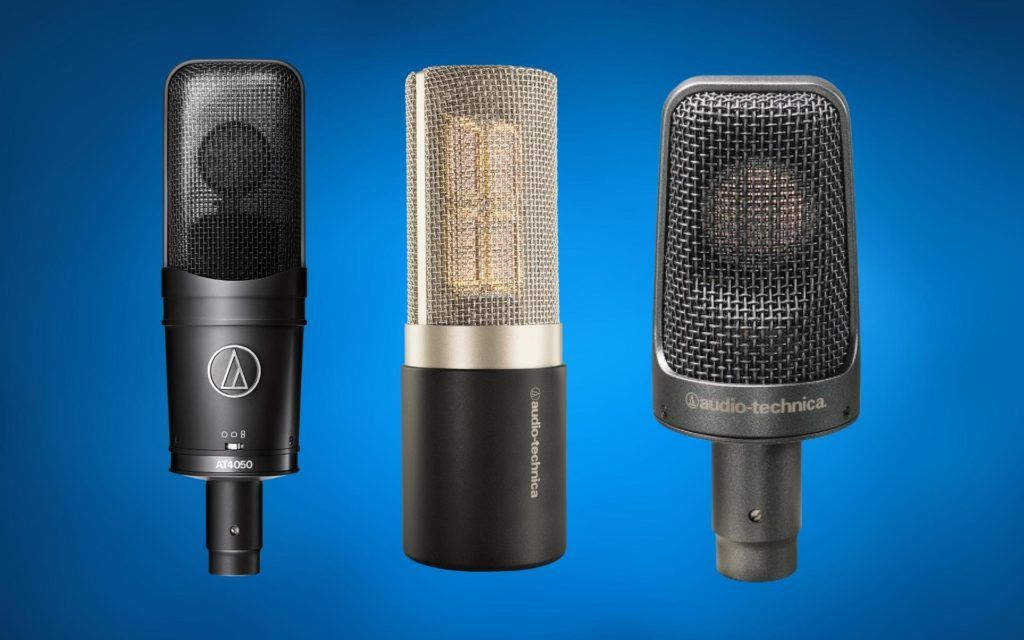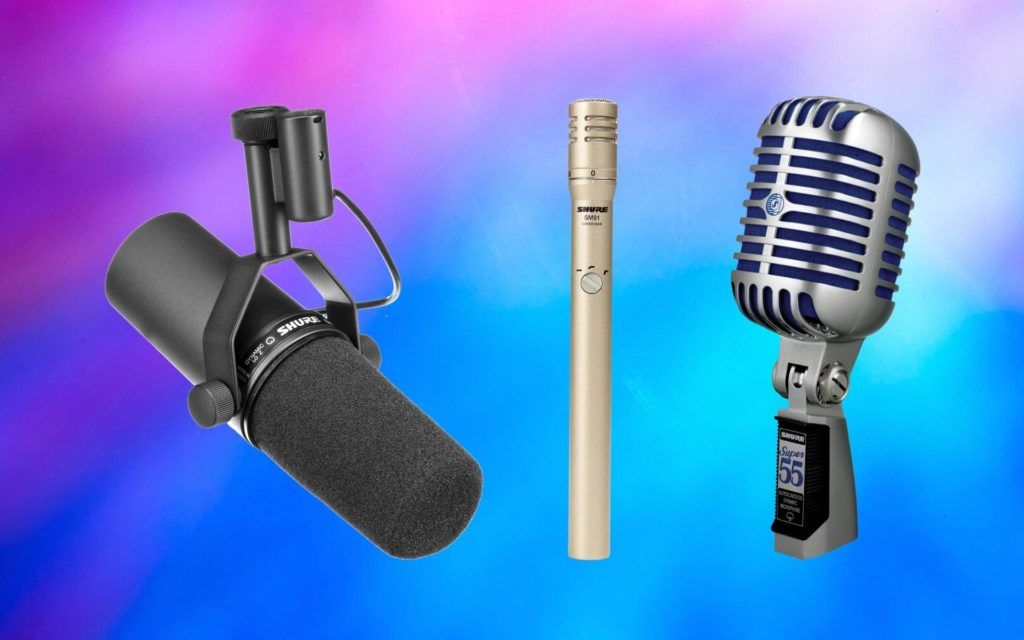We review products independently and our recommendations are genuine. If you purchase through links on our site, we may earn an affiliate commission. Learn More
In this guide, we will be looking at the best microphones for guitar amps available on the market. Choosing a microphone can be a daunting task with the enormous variety of brands to choose from, so we’ve put together this selection based on sound, durability, ease-of-use, and cost.
What are the Best Microphones for Guitar Amps?
Guitar Amp Microphones Reviews
Shure SM57 Cardioid Dynamic Microphone
| FEATURES | RATING | PRICE | |||
|---|---|---|---|---|---|
| FEATURES |
|
OUR RATING | PRICE |
|
Shure SM57 Cardioid Dynamic Microphone Review
Noted for its clear high-end presence and clarity, there is a reason the famed Shure SM57 is one of the most widely used microphones in the world, favored by top recording engineers and sound engineers alike.
Let’s talk about sound. Its natural presence peak means it is perfectly suited for capturing the bite in guitar amps. If you favor the more high-gain metal side of things, like myself, you’ll find examples of this microphone in action across countless recordings – famed metal production legends like Andy Sneap, Colin Richardson, and Fredrik Nordstrom have all favored the SM57.
With its small size and robust build quality, to say this microphone is built to last is a severe understatement. There are countless stories of people running SM57s over with trucks, dropping them from buildings, submerging them in saltwater, and burying them in the Earth for months – all without so much as affecting their frequency response!
All in all, this microphone will appeal to pretty much everyone, from amateurs to professionals, and given its sound, reputation, and affordability, it’s a complete no-brainer to list this as the best overall microphone for guitar amps.
Pros
- Robust and durable construction is built to last
- Cardioid pattern ideal for isolated recording quality
- Best overall microphone for users, given its quality and price point
Cons
- Requires a higher input gain for the best sound
- Used on a lot of records, so not ideal for a unique sound
Sennheiser MD421-II Cardioid Dynamic Microphone
| FEATURES | RATING | PRICE | |||
|---|---|---|---|---|---|
| FEATURES |
|
OUR RATING | PRICE |
|
Sennheiser MD421-II Cardioid Dynamic Microphone Review
Next up on our list of the 6 best guitar amp microphones is the classic Sennheiser MD421-II, a dynamic microphone often considered the standard alternative to, or in some cases paired with, the Shure SM57.
Let’s talk about the construction – the large diaphragm, dynamic element handles high sound pressure levels, making it a natural for recording guitars.
The five selectable bass roll-off settings control the proximity effect, so you can use the MD 421-II in close-miking situations and still get a clean, clear response with no unnatural bass boost.
Additionally, the MD 421-II has a glass composite housing and hardened stainless steel basket for rugged and durable performance in the studio or on stage. The sound inlet basket is refined steel for capsule protection. This means that this microphone will last you for potentially years to come!
Whilst the MD421 might not be the cheapest option on this list, it’s certainly a classic, and when you consider the lifetime performance and versatility of this mic, it’s easy to understand why the MD 421-II is world-renowned for quality and value!
Pros
- 5-Stage switch Bass allows for close-miking without overhyped bass
- Excellent build quality and design
- Cardioid pattern is ideal for isolated recording quality
Cons
- More expensive than the SM57, so for some, the price may not be justified
- Not as much high end as SM57 so whilst works well blended, for some not as useful on its own
Neumann U87 Large-Diaphragm Condenser Microphone
| FEATURES | RATING | PRICE | |||
|---|---|---|---|---|---|
| FEATURES |
|
OUR RATING | PRICE |
|
Neumann U87 Large-Diaphragm Condenser Microphone Review
The most expensive and revered entry on our list of the best microphones for guitar amps is the Neumann U87. This is a mic that offers a tonne fidelity, clarity, and authoritative presence, with a flat midrange and gentle presence boost making the signal from your amplifier stand out.
Offering a choice of three switchable polar patterns (omnidirectional, cardioid, and figure-8), the U 87 gives you impressive flexibility when it comes to exploring different recording techniques.
If, for instance, you wanted to capture your guitar in the room in stereo, you could use two U87’s for this exact purpose.
Additionally, If you’re using the U 87 Ai to capture a loud source, the microphone’s switchable 10dB pre-attenuation pad comes in handy. With the pad activated, the mic accepts sound pressure levels up to 127dB — perfect for miking a guitar amp with the volume dimed, you get the character of a loud amp without the loss of clarity. An additional switch engages the mic’s low-frequency cutoff, which reduces undesirable mud and rumble at the input of the microphone amplifier.
Whilst the other microphones on this list appeal to beginner and intermediate guitarists, the U87 I would recommend more to the seasoned guitarist and/or recording engineer, given its hefty price and more specialized features.
If you are looking for a hand-crafted, supreme-quality microphone and have the budget to afford it, the Neumann U87 is the option for you.
Pros
- Super-cardioid construction allows for near-perfect instrument isolation
- Hum compensating coil allows for noiseless recording
- Excellent value for money being the cheapest option on this list
Cons
- Hyped top end of this mic may not be ideal for some guitarists
- Not as high-quality build as other microphones on this list
Sennheiser E609 Supercardioid Dynamic Guitar Microphone
| FEATURES | RATING | PRICE | |||
|---|---|---|---|---|---|
| FEATURES |
|
OUR RATING | PRICE |
|
Sennheiser E609 Supercardioid Dynamic Guitar Microphone Review
Whilst other microphones on this list are known for their versatility, the Sennheiser E609 takes the opposite approach. This microphone was designed specifically for the sole purpose of recording guitars.
Firstly, its flat side-address design allows you to hang it by the mic cable from the top of your amp, eliminating the need for a mic stand. This is of course extremely convenient for the gigging guitarist, allowing you to quickly set up your mic for performance without messing around with the mic stand.
Another cool feature of this mic is its supercardioid polar pattern. Whilst this is less common for guitar amp microphones, it allows for near-perfect isolation of the instrument which means that you won’t be fighting with bleed from bass, drums, or vocals whilst you play, leading to a focused sound.
This unusual but invaluable configuration also allows for more tonal variations from small changes in positioning.
In addition to all the above, it’s also worth mentioning that in terms of price this microphone is an absolute winner and the cheapest option on this list. If you want a microphone that acts as a tailored guitar recording, all at an unbelievable price, the Sennheiser E609 is the option for you.
Pros
- Switchable polar patterns allow for flexibility in recording
- 10dB pre-attenuation pad allows for high volume on a guitar amp
- Hand-crafted, top quality design
Cons
- Most expensive microphone on this list means it may be out of budget for some
- Advanced features may be intimidating for beginners
AKG C3000 Cardioid Condenser Microphone
| FEATURES | RATING | PRICE | |||
|---|---|---|---|---|---|
| FEATURES |
|
OUR RATING | PRICE |
|
AKG C3000 Cardioid Condenser Microphone Review
Last up on our list of the best microphones for guitar amps is the C3000 made by AKG. This microphone serves as a solid all-rounder, balancing quality build and features at a reasonable price.
Although typically used for vocals, the slightly pushed from neutral and throaty character to this microphone will ensure that your guitar tracks will stand out even in a dense mix.
Let’s talk about the features – this microphone includes a switchable bass-cut filter and pre-attenuation pad. This makes it perfectly suited for use on loud sound sources producing sound pressure levels up to 150dB SPL.
If you want to crank your amp to extremely noisy levels, this microphone is built to withstand the loudness without issue.
In addition to the above, this mic also features a rugged build design. Whilst its egg-shaped construction may not be everyone’s cup of tea, it certainly means that this microphone is built to withstand a variety of applications over a long period of time, making it a solid workhorse microphone.
This microphone is best suited for those who aren’t necessarily looking to bust the bank but want one which offers quality at a reasonable price. Whilst its design may not be for everyone, you can be sure that the AKG C3000 will serve you well for many years.
Pros
- Good quality to price ratio
- Unique rugged design allows for a microphone with longevity
- Switchable bass-cut filter and pre-attenuation pad allow for loud recording sources
Cons
- Not the most visually attractive microphone for some with its egg-shaped design
- Doesn’t come with as many features as some of the more pricey entries on this list
Royer R-121 Studio Ribbon Microphone
| FEATURES | RATING | PRICE | |||
|---|---|---|---|---|---|
| FEATURES |
|
OUR RATING | PRICE |
|
Royer R-121 Studio Ribbon Microphone Review
The final entry on our list of the 6 best microphones for guitar amps is Royer’s R-121 Studio Ribbon Microphone. This GRAMMY award-winning mic has been used on countless records, and excels recording anything you put it up against – guitar amps being no exception.
Firstly, in regards to sound, the R-121 is a winner when it comes to recording guitar tracks. The response of this mic is flat and well balanced; the low end is deep and full without getting boomy, mids are well defined and realistic, and the high-end response is sweet and natural sounding, never edgy or sibilant.
In addition, you’ll notice on playback that the recorded sound is natural and alive, with a panoramic, ambient feel much like what you heard when you were standing in front of the instruments you recorded.
Also, this microphone features a design feature that is unique – at distances of two feet and closer, the back of the Royer R-121 is brighter than the front side.
The difference in the sound is somewhat like blending 10% of a condenser mic in with your ribbon mic signal. This is ideal for guitar recording, as in order to make the instrument stand out in a mix high end is needed.
Ultimately, if you are looking for a microphone that offers a fantastic, top-quality guitar sound you will not need to look any further than the Royer R-121. Although the price point may deter some, if you are looking to invest in a microphone a step above the competition, the R-121 is worth every penny.
Pros
- Flat, well-balanced frequency response overall
- Captures the ambient feel of a room really well
- Unique directional design feature allows for high end to be blended in without overpowering the body
Cons
- More delicate build quality given its high-end features
- Price point may deter some buyers
Guitar Amp Microphones Buyer’s Guide
When it comes to microphones that are best suited for micing up guitar amps, there are two crucial elements to consider.
Firstly, EQ curve. The guitar is ultimately a mid-range instrument, so looking for a microphone that is flattering in these frequencies (100hz to 6000 hz) is crucial.
Secondly, when you send a signal into a guitar cabinet, often the best way to get the head and cabinet working together well is to use a lot of volume, therefore it’s fundamental that you have a microphone that is able to handle high sound pressure levels (SPL).
Dynamic vs Condenser Microphones
The most common microphones used to record guitar amplifiers are dynamic mics like the Shure SM57, Sennheiser MD421-II, and Sennheiser E609. These mics are designed to withstand extremely high SPL, which is great because guitar amplifiers can be very loud, and many players like to play them loud.
Condenser microphones such as AKG C3000 and Neumann U87, however, are designed more with sound fidelity in mind. Condenser microphones produce a far higher quality of sound than dynamic mics thanks to a very thin diaphragm membrane, which transfers energy to a backplate and alters the capacitance of a circuit.
Given the above, dynamic mics typically tend to be the favored option for recording guitar amps. There is no reason, however, to not use condenser mics for this purpose, more specifically in a studio setting, provided one takes care when it comes to the volume.
What are microphone polar patterns?
A microphone polar pattern determines where sound is detected and at what angles a mic is sensitive to a sound source. Some microphones possess the ability to switch between patterns to suit the situation. Common patterns include:
- Omnidirectional – This type of mic ‘hears’ sound equally from all angles, whatever you have it pointed at. An omnidirectional pattern is ideal for lavalier mics clipped onto clothes.
- Cardioid – The standard choice when hooked up to a PA system or loud stage. It is only sensitive to noise originating from where it’s pointed, making it somewhat feedback-resistant.
- Supercardioid – A narrower and more direct pattern than cardioid. It largely rejects ambient sound but has some sensitivity directly behind its direction.
- Hypercardioid – Even more extreme focus than super-cardioid. Perfect for picking up sound from a single source amongst other noise.
- Bi-directional – A figure-of-eight pattern like the Royer’s R-121 Studio Ribbon Microphone. Detects sounds in front of and behind the diaphragm, but not directly from 90% side angles. Mostly used for large diaphragm or ribbon mics.

